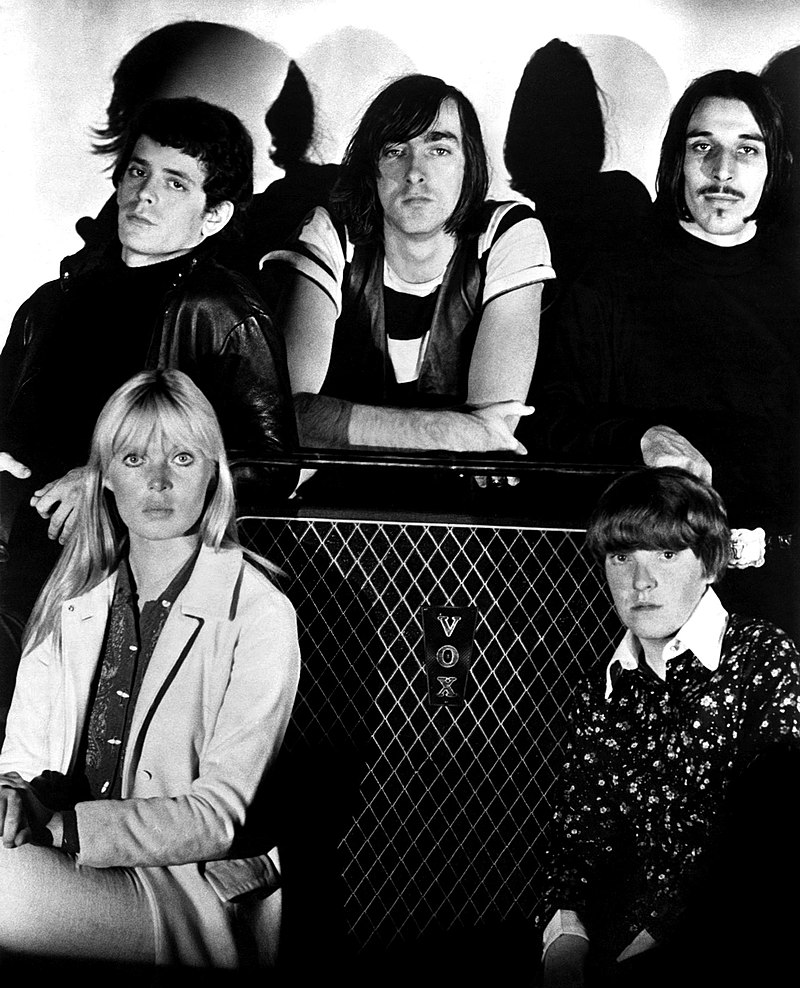Introduction
The Velvet Underground is not some typical oldies music/classic rock group. They are one of the most influential rock groups in the 20th century. And like many other influential rock groups, The Velvet Underground enjoyed little commercial success during their existence in the 60s and 70s music era. But as years passed its fusion of rock/avant-garde music/poetry have inspired countless rock artists that followed them.
The group was briefly managed by Andy Warhol for a time. The band’s debut album The Velvet Underground & Nico featured German rock chanteuse Nico, and became one of the most iconic rock albums ever made. Another album White Light/White Heat made a strong impact on punk music. More on the Velvet Underground here in his article.
The 1960s: formation and early career
The foundations of the Velvet Underground started in 1964 when John Cale met singer/songwriter/guitarist Lou Reed in New York City. Reed had performed in some garage bands before and also worked as a songwriter. Cale, on the other hand, was a classically-trained musician but was also interested in rock music.
When Cale and Reed met, the two hit it off. The two men, as well as bassist Sterling Morrison and drummer Angus MacLise, formed a group and played together in poetry and art galleries in lower Manhattan. They went through several names before calling itself the Velvet Underground in 1965.
MacLise quit before the name change, though, and he was replaced by Maureen Tucker. In November 1965 the group played their first gig in their new moniker, at a high school dance in New Jersey. The group eventually lived for a time at Greenwich Village where they met pop artist Andy Warhol. The eccentric artist invited them to perform at his Exploding Plastic Inevitable multi-media events, where they also met the German singer Nico who would collaborate with them.
The band, under Warhol’s tenure, released their debut album The Velvet Underground & Nico in 1966. It became one of the most influential debut albums at least in rock history (not to mention its iconic album sleeve art, designed by Warhol himself).
After having a rift with Warhol, the band severed their ties with him and welcomed Steve Sesnick as their new manager. However, without enjoying the benefit of Warhol’s name (as well as his publicity savvy), the Velvet Underground faded from the public eye.
Their following further reduced when they recorded and released the far-out noisy, distorted and feedback-driven White Light/White Heat (1968). Like the first album, White Light/White Heat fared poorly commercially. But over the years, White Light/White Heat have lent a powerful impact on punk music as well as the British “shoegaze” movement (most notably led by Loveless by My Bloody Valentine, whose “white noise” attributes have been compared to White Light/White Heat).
But soon after the album’s release, Cale quit the band over differences especially with Reed. Cale was replaced by Doug Yule. In 1969 they released their self-titled third album, which was more melodic than the previous album.
The 1970s
The Velvet Underground (also dubbed as The Velvets by then) returned to New York City in 1970 and played some gigs there. It had been a long time since 1967 that they hadn’t performed at the Big Apple. They also released their fourth LP Loaded. They could have revived some interest, but Reed left the group after having a row with manager Sesnick. He took a day job at his father’s accounting firm for a short time before relocating to the UK where he launched a solo career.
The Reed-less Velvets embarked on a tour around the East Coast region before Morrison quit in 1971, and then it was followed by Tucker’s departure too. With no principal members left, Yule managed to retain the Velvet Underground name, with just himself and his backing band. After releasing the final album Squeeze in 1973, Yule called it quits.
Reunions and recent developments
The members had been busy with their own respective careers since the disintegration and breakup of the Velvets. Reed’s solo career became successful that it re-generated interest on the Velvets more in the following years than in the years of the band’s own existence.
Cale and Reed had started collaborating again with each other in many projects, most notably Songs for Drella, a concept album dedicated to Warhol who had died in 1987. Nico died in 1988 from injuries sustained from a cycling accident.
Reed, Cale, Morrison and Tucker reunited in 1993 for their European tour which became successful. Since they reunited, more activities had been lined up for them — including an appearance on MTV Unplugged and possibly a new album. But before that happened, Cale and Reed were at odds again at each other which led to the band’s breakup once more.
In 1995, Morrison died of non-Hodgkin’s lymphoma, aged 53. The following year, the Velvets were inducted into the Rock and Roll Hall of Fame — and for the final time, Cale, Reed and Tucker performed together during their induction. They performed “Last Night I Said Goodbye to My Friend” as a tribute to Morrison.
Reed died in 2013 from a liver disease, aged 71. In 2015 he was inducted into the Rock and Roll Hall of Fame as a solo artist.

